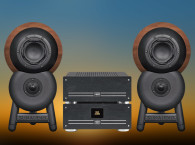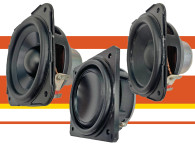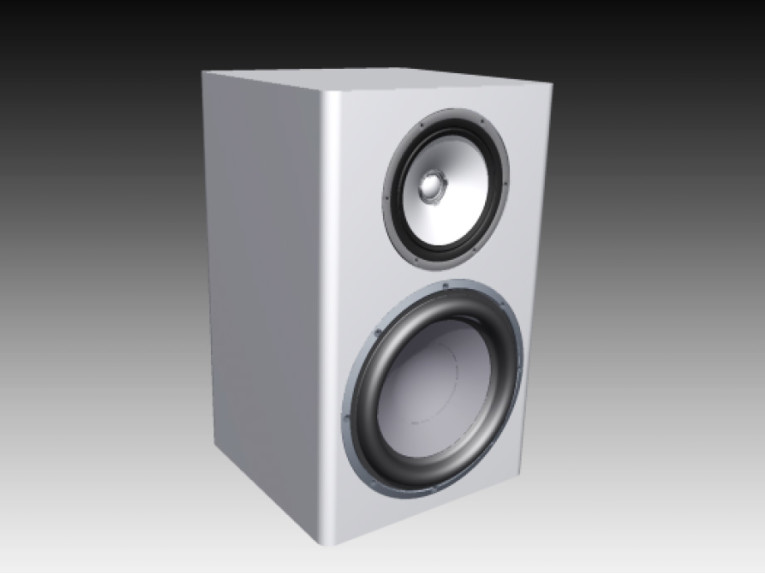
The SEAS KingRO4Y is a 3-way loudspeaker kit, using a 26 cm (10-inch) aluminum cone subwoofer and a completely new 18cm (7-inch) midrange coaxial. The coaxial unit uses a magnesium/aluminum-alloy cone for both the midrange and dome tweeter. All are housed in a compact closed box enclosure and powered by the Hypex PSC2.400 DSP amplifier. The design goal for this kit is to get a true full-range loudspeaker system in a compact enclosure with outstanding performance.
The Drive Units
To achieve the design goals of this kit SEAS chose to start with a coaxial unit in order to save some baffle space and get all of the benefits of sound quality from a coaxial. Since the chosen midrange coaxial can easily play down to 150Hz, it was possible to use a high quality subwoofer with excellent low- and high-end extension to take care of the lower frequencies.
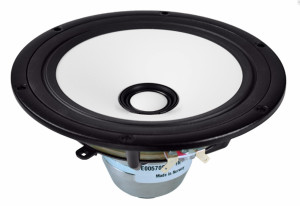 C18EN002/A - The coaxial unit uses a lacquered magnesium/aluminum-alloy cone and dome, and are integrated to form a single acoustic source. A benefit of the coaxial arrangement is that the off-axis response is equal in all directions. That makes the sound imaging very stable with a large sweet spot. It uses a Neodymium magnet system for optimum air-flow, minimal back wave reflection and a healthy sensitivity.
C18EN002/A - The coaxial unit uses a lacquered magnesium/aluminum-alloy cone and dome, and are integrated to form a single acoustic source. A benefit of the coaxial arrangement is that the off-axis response is equal in all directions. That makes the sound imaging very stable with a large sweet spot. It uses a Neodymium magnet system for optimum air-flow, minimal back wave reflection and a healthy sensitivity.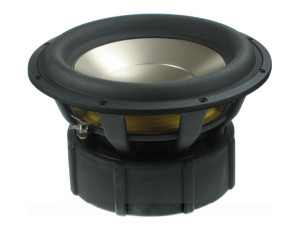 L26RO4Y - This subwoofer driver is the perfect solution for good bass in a small enclosure. With its high power handling and low Q and Fs it can handle a large amount of EQ in the low end. Since it also has a smooth response high up in frequency it can be used all the way to a midrange unit, thus eliminating the need for a dedicated mid-woofer in this loudspeaker kit.
L26RO4Y - This subwoofer driver is the perfect solution for good bass in a small enclosure. With its high power handling and low Q and Fs it can handle a large amount of EQ in the low end. Since it also has a smooth response high up in frequency it can be used all the way to a midrange unit, thus eliminating the need for a dedicated mid-woofer in this loudspeaker kit.SEAS also intended to use a plate amplifier with DSP capabilities that would be easily available, and without costing a fortune. The choice was the popular Hypex PSC2.400 DSP amplifier. It delivers 2x400 W into 4 ohm, and has a large filter bank for crossover and EQ. Since it only has 2 amplifier outputs, it was necessary to use a passive crossover on the coaxial. The coaxial is easy to filter so this was a good compromise instead of using a more expensive 3-channel amplifier and DSP.
The purpose of this passive crossover is to get a proper band limiting of the midrange and tweeter, and also to make sure that they have a good phase tracking, so that they are perceived as a single unit. The EQ is easier and better to do in the DSP.
On the tweeter SEAS used a 2nd order filter, with a 3rd order- and a notch-filter for the midrange to make sure that the break-up is suppressed properly. This also ensures that the two drivers are in-phase over a very wide frequency range. The crossover frequency between the midrange and tweeter is 2.1kHz.
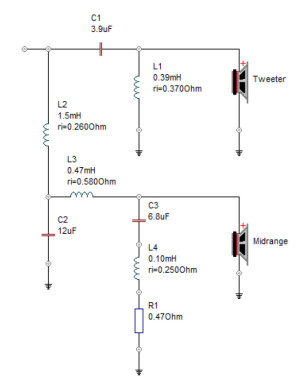
On the subwoofer SEAS used 3 biquads to level the frequency response. Two lowpass biquads are used to make the roll-off to the midrange follow an LR4 at 233Hz. In the low-end SEAS used a pole shift to move the roll-off down to 30Hz. SEAS also added a high-pass at 17Hz for protection and also to make sure that there isn't too much gain in the DSP.
The Enclosure Design
One of the design goals of this system was to make the enclosure as small as possible. Since the kit targets DIY enthusiasts and not professionals, the design should not be overly complicated. The subwoofer needs a 12 L closed box as a minimum to have a nice response. However, the used enclosure is 16.7 L. This is to ensure that the needed power for the low-end EQ isn't too high. A smaller box would require more power, because the air-stiffness of the box would increase making it harder for the driver to move.
The coaxial uses a closed box of 11 L, which was the smallest possible enclosure on top of the subwoofer and still be an easy build. That gives the midrange excellent working conditions and a nice response as well as good room inside the enclosure for the passive crossover.
The enclosure uses 25 g of polyester foam as damping material in the subwoofer volume, and 15 g in the coax volume. The damping material is evenly distributed in the enclosure.
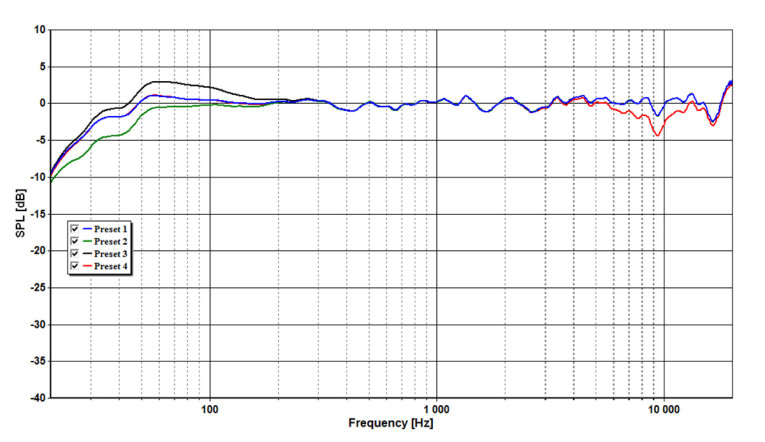
More details and measurements are available on the company's website here.
www.seas.no




